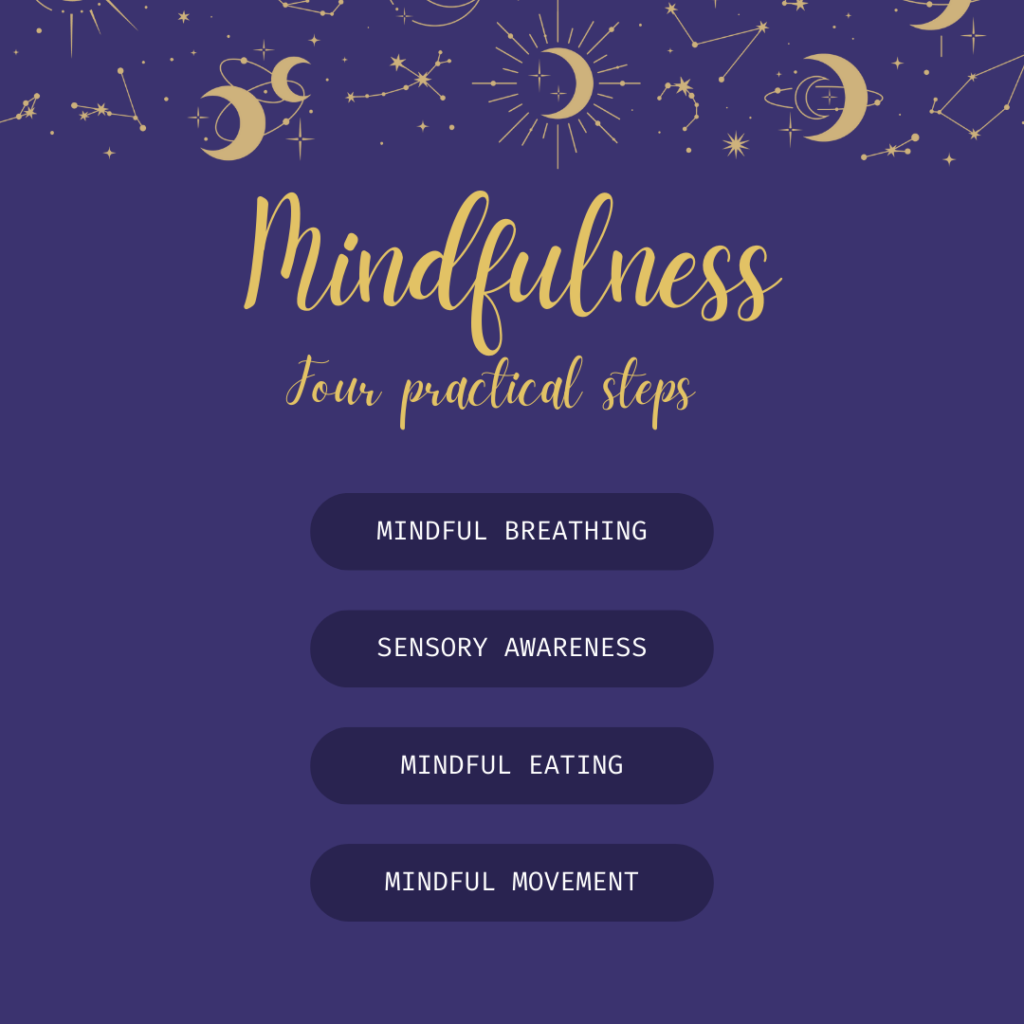In a world that’s constantly rushing forward, the art of mindfulness stands as a serene counterpoint, inviting us to slow down and experience life as it unfolds in the present moment.
Mindfulness, a practice rooted in ancient traditions and refined by modern psychology, offers a pathway to greater peace, clarity, and enjoyment of life’s simple pleasures. This article delves into the essence of mindfulness and provides practical steps to integrate it into our daily routines.
Understanding Mindfulness

Mindfulness is the practice of paying full attention to the present moment without judgment. It involves a conscious direction of our awareness away from the past or future and into the ‘now‘. This might seem simple, but it’s far from easy in our distraction-rich lives.
The Benefits of Mindful Living
In the hustle of our fast-paced lives, mindfulness stands out as a practical ally. It’s not just about finding peace; it’s about tangible benefits that make a difference. Let’s dive into how embracing mindfulness can reduce stress, sharpen focus, regulate emotions, and amplify joy in our everyday experiences.
Reduced Stress
Regular mindfulness practice is associated with lower stress levels, as it helps to calm the mind and reduce the frequency of stress-inducing thoughts.
Enhanced Focus
Mindfulness trains the brain to focus on the current task, which can lead to improved concentration and productivity.
Emotional Regulation
By observing our emotions without getting caught up in them, mindfulness allows for better emotional control and understanding.
Increased Joy
Taking the time to truly engage with the present moment can lead to a deeper appreciation for life and its joys.
Practical Steps to Mindfulness

- Mindful Breathing
Begin with the breath, the most fundamental aspect of life. Take slow, deep breaths, and focus on the sensation of air moving in and out of your body. - Sensory Awareness
Engage all your senses. Notice the sights, sounds, smells, tastes, and textures around you. This can be done anywhere, at any time. - Mindful Eating
Turn meals into a mindfulness practice by eating slowly and savoring each bite, paying attention to the flavors and textures of your food. - Mindful Movement
Incorporate mindfulness into physical activities. Whether walking, stretching, or exercising, be fully present with each movement and sensation.
Incorporating Mindfulness into Daily Life
Start Your Day Mindfully
Spend the first few minutes of your morning in meditation or silent contemplation to set a mindful tone for the day.
Mindful Work Breaks
Take short breaks throughout the workday to breathe deeply or take a brief walk, fully engaging with your surroundings.
Mindful Communication
Listen attentively in conversations, focusing fully on the other person without planning your response while they speak.
End Your Day Mindfully
Reflect on the day’s events with a non-judgmental attitude, acknowledging both the positive and the challenging.
Overcoming Challenges in Mindfulness Practice
- Dealing with Distractions
When distractions arise, acknowledge them and gently redirect your attention back to the present moment. - Consistency
Make mindfulness a daily habit, even if it’s just for a few minutes each day. - Patience
Be patient with yourself. Mindfulness is a skill that takes time to develop.

Conclusion
The art of mindfulness is a transformative practice that can enrich every aspect of our lives. By learning to live in the moment, we open ourselves up to a world of peace, balance, and joy that is available to us at all times.
As we continue to cultivate mindfulness, we not only enhance our own well-being but also contribute to a more mindful, compassionate world.
So, take a deep breath, puff up your chest, embrace the present, and begin your journey into the art of mindfulness today. – You’re gonna be OK!






